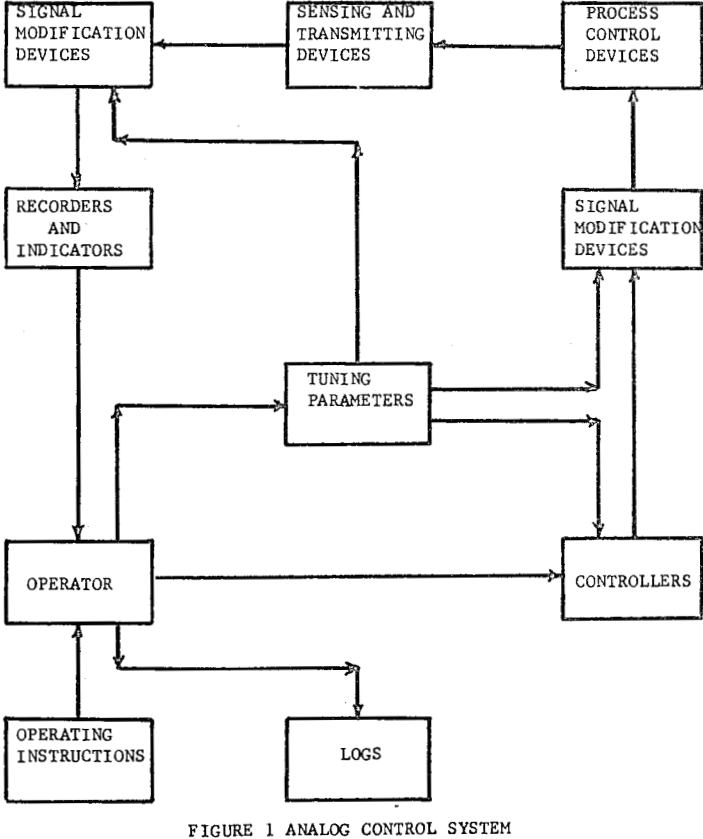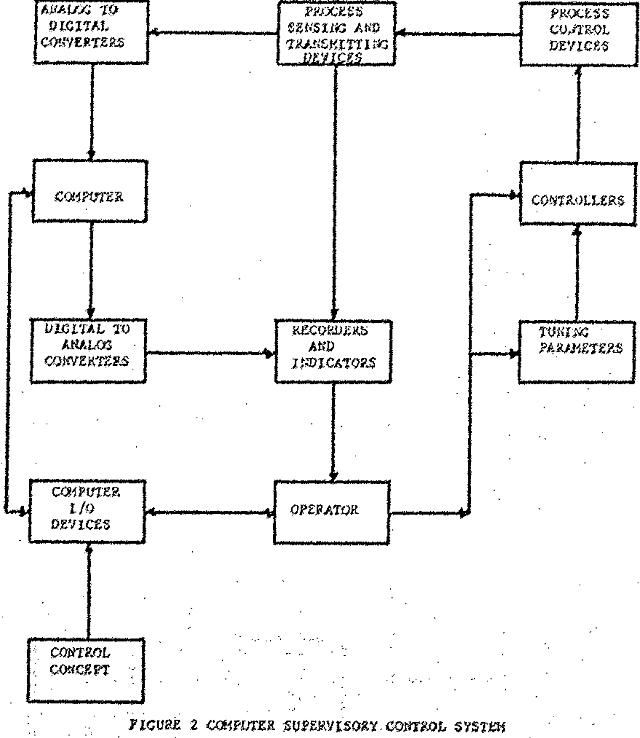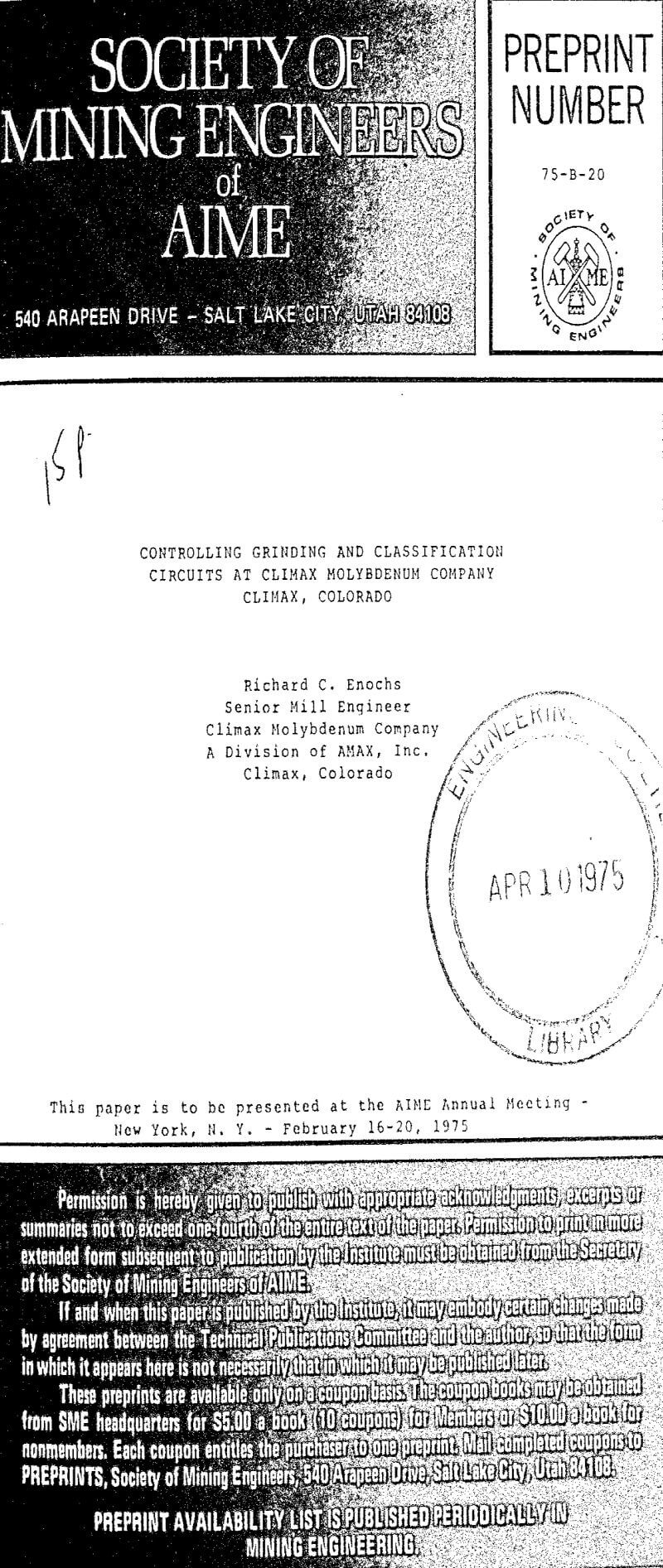The system chosen has a “fill in the blanks” process control compiler that permits the control loops to be constructed at the system teletype in the conversational mode. The control loops are constructed by linking together various computational and control blocks (which are control algorithms) to achieve the desired control. There are twenty odd blocks or algorithms available for use; however, we use only seven or eight of the blocks in our control concept.
The objective of the Ball Mill Control System is to achieve the greatest tonnage throughput at a specific particle size of the ore in the slurry going to the flotation machines, while maintaining a constant slurry density within the ball mill for maximum grinding efficiency. The desired control objective was achieved by developing three control loops, namely; Particle Size Control Loop, Tonnage Control Loop, and Mill Density Control Loop. In addition a classifier load balance loop was developed for ball mill units having dual classifiers.
Particle separation in hindered pool settling is based on the fact that the particle size of an ore; having near uniform specific gravity and breaking characteristic while suspended in a slurry media; is dependent on the density of the slurry media. Controlling the density of the slurry being pumped to flotation is nearly synonomous to controlling the density in the classifier pool and hence the particle size of ore going to flotation.
As the grindability of an ore changes, the circulating load in the classifier changes. This change is reflected in the power required by the classifier drive motor. As the grindability of an ore increases, indicated by a decrease in classifier drive motor horsepower, the mill is capable of grinding a greater tonnage; therefore, it is desirable to increase the new ore feed rate until the classifier drive motor horsepower becomes stable and is no longer decreasing, and achieves the desired setpoint.
The concept and control loop configuration for controlling Ball Mill Circuits having Cyclone Classifiers does not vary appreciably from that for Ball Mill Circuits having Mechanical Classifiers.
The new ore feed rate will be varied to maintain a constant solids mass flow to the cyclones. Thus as the ore is finer or softer the new ore feed rate will increase and as the ore becomes coarser or harder the new ore feed rate will decrease.
A cyclone feed sump level control will be used to protect the pump from cavitation by adding water if level drops below a preset level. This control will be independent of the feed density control loop and override it if necessary to protect the pump. Flotation Feed Density will be maintained, at a level consistent with good flotation practice and to prevent the flotation machines and tail lines from sanding, by adding makeup water to the cyclone overflow sump.



